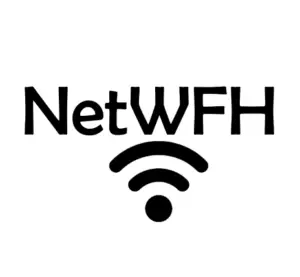This post contains affiliate links.
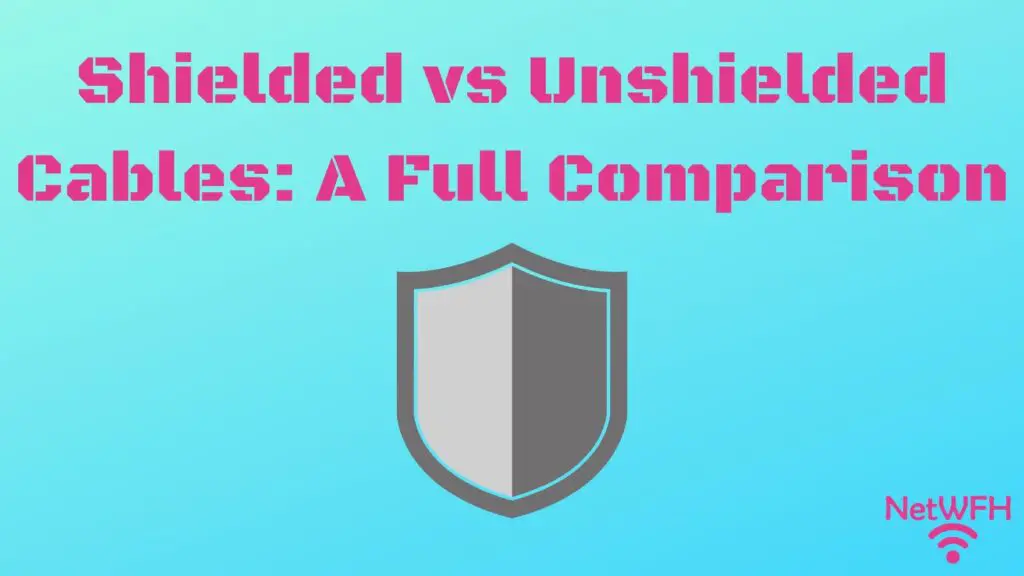
If you’ve miraculously made it to this page, it means you want to know the difference between shielded and unshielded ethernet cables.
Let’s start with the basics.
When buying ethernet cables, there are many variables to consider, including:
- The category of cable you buy (e.g. Cat5e, Cat6, etc.)
- How long it is
- How many cables you want to buy
- What color you want
- Whether the cable is shielded or unshielded
Most of the above variables are pretty straightforward, but let’s pump the brakes with the shielded or unshielded part.
What does this mean, and what impact will it have on your network?
When comparing shielded vs unshielded cables side-by-side, they look very similar. Despite their similar appearances, they’re actually quite different.
It’s important to understand the differences between the two. If you don’t, you may end up buying the wrong type of cable, which can slow down your network speed.
So what are the differences between between the two types?
The most important differences between shielded and unshielded ethernet cables are as follows:
- Shielded cables are much more resistant to electromagnetic interference (EMI) than unshielded cables
- Inside of the cable itself, shielded cables have a foil wrapping that unshielded cables don’t have
- Unshielded cables are more flexible than shielded cables
- Shielded cables cost more than unshielded cables
In this post I’ll take a deeper dive into the differences between these two types of ethernet cables. I’ll also explain the environments where the two types of cables are most effective.
Shielded vs unshielded cables: the similarities
Before we dive into how shielded and unshielded cables are different, let’s talk about how they’re similar.
The purpose of both types of cables is the same. Their goal is to allow two devices to communicate with each other through the cable.
But why would you want to use ethernet cables in the first place?
Ethernet cables are used because wired connections between devices are faster and more reliable than wireless ones.
For example, if you’re an online gamer, you may want to use an ethernet cable to connect your computer to the internet. You definitely don’t want a slower connection than the players you’re playing against. Worse yet, you don’t want your connection to drop in the middle of a game.
Using an ethernet cable can help address some of these concerns.
So when it comes to shielded or unshielded ethernet cables, there’s no difference in the function of the cable. Both cables will pass data from one device to another.
If these two types of cables do the same thing, why are there different cables in the first place?
As you’ll see, that’s because both types of cable are made for different operating environments.
With that, let’s dive into how shielded and unshielded cables are different.
Shielded vs unshielded cables: the differences
There are multiple differences between shielded and unshielded ethernet cables, even though they accomplish the same thing.
In looking at how they’re different, you’ll be able to make smart decisions about which type of cable will suit you best in your network.
So how do shielded and unshielded cables stack up?
Let’s find out.
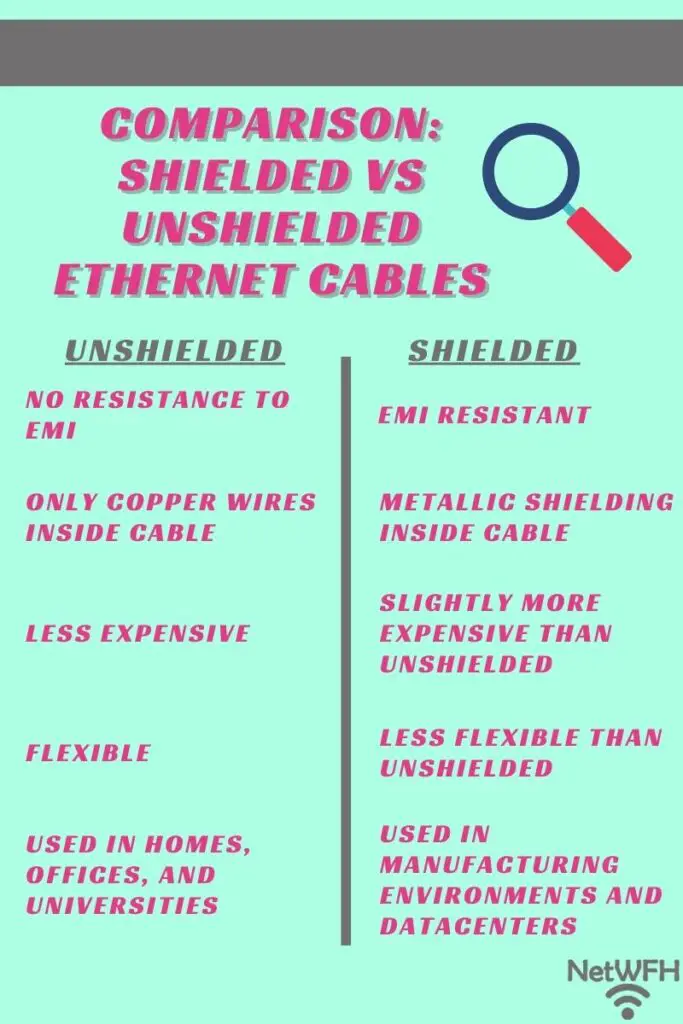
Resistance to electromagnetic interference
The most significant difference between shielded and unshielded cables is their resistance to electromagnetic interference, or EMI.
EMI you say? What in the world is that?
Electromagnetic interference is just what it sounds like. It’s interference that’s caused by nearby electromagnetic forces.
Not so helpful is it? Let’s look at it from the perspective of ethernet cables.
Essentially, EMI is the disruption of the data going through ethernet cables as a result of electronic equipment in the area.
Why is this bad?
It’s bad because EMI will either slow down or distort the information that’s traveling through the cable. If EMI is impacting your ethernet cables, you’ll know because your network performance will drop considerably.
All electronic devices create some level of EMI, including ethernet cables themselves. With that said, in many household and office devices there isn’t enough EMI in the environment to negatively impact your ethernet cables.
The equipment that you need to worry about impacting your ethernet cables is more commercial. I’m talking about motors, large air conditioners, power lines, and even fluorescent lights. These devices give off large electromagnetic fields.
If equipment is giving off a large electromagnetic field and one of your ethernet cables is within that field, it won’t work as it should.
That’s where shielded ethernet cables come in.
The purpose of shielded ethernet cables is to reduce the impact of EMI. They’re manufactured differently than unshielded cables (keep reading to find out how), and as a result, they’re better suited for environments with high EMI.
This is the major difference between shielded and unshielded cables: shielded cables are built for environments with high EMI, while unshielded cables are not.
How they are manufactured
As I previously mentioned, shielded ethernet cables are made differently than unshielded cables so they can be more resistant to EMI.
What’s interesting about this is the fact that although they’re made differently, it’s hard to tell the difference between a shielded and unshielded cable.
Here’s a visual to prove my point. There’s one shielded cable and one unshielded cable in the picture below:
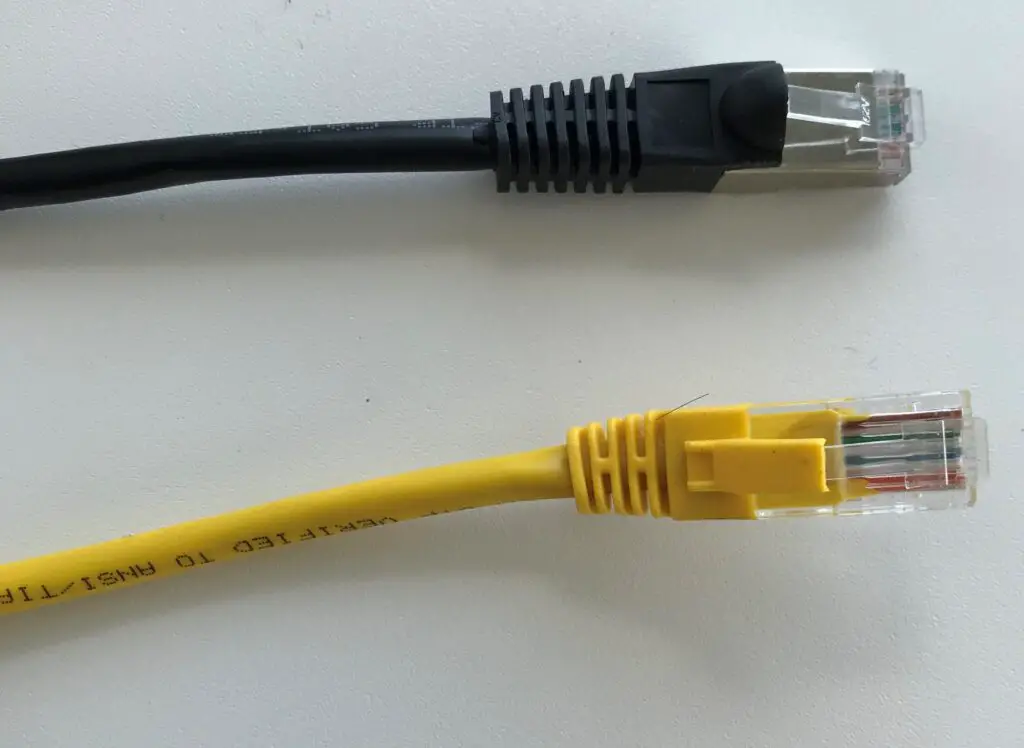
Could you tell the difference between the two?
I didn’t think so.
So how are they different?
We need to look inside the cable for our answer.
Inside a shielded ethernet cable, you’ll find a metallic foil. The metallic foil wraps around the 4 pairs of copper wires inside the cable. In most ethernet cables, each pair of wires will be twisted together.
You’ll also have a grounding wire inside the shielded cable, which (if grounded properly), ensures that any EMI doesn’t affect the cable’s performance.
Here’s what the foil inside a shielded cable looks like:
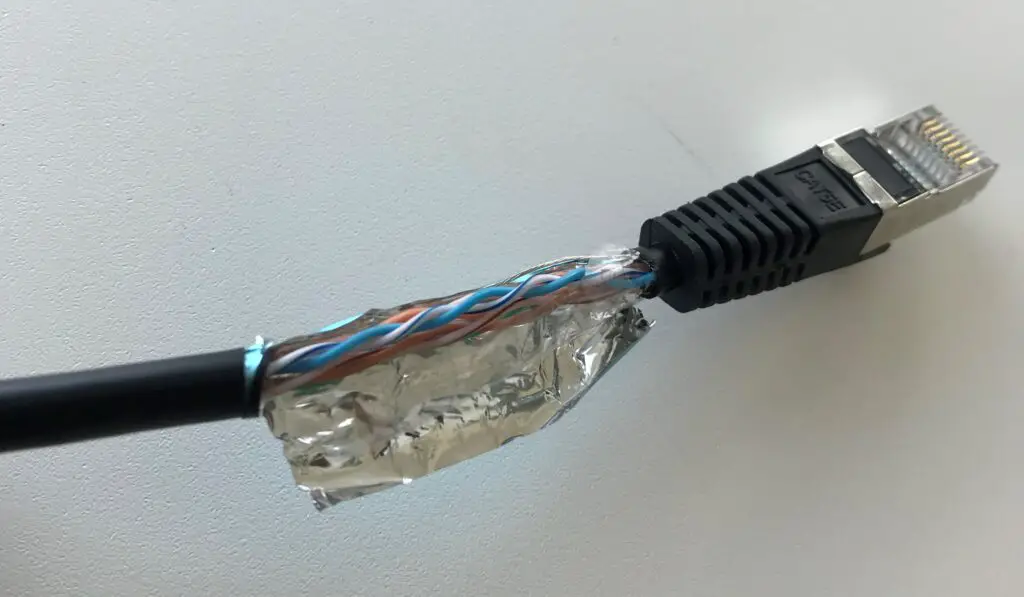
And here’s the grounding wire:
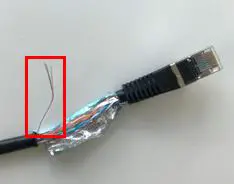
The difference here is that unshielded ethernet cables don’t have foil or a grounding wire inside them.
See what I mean?
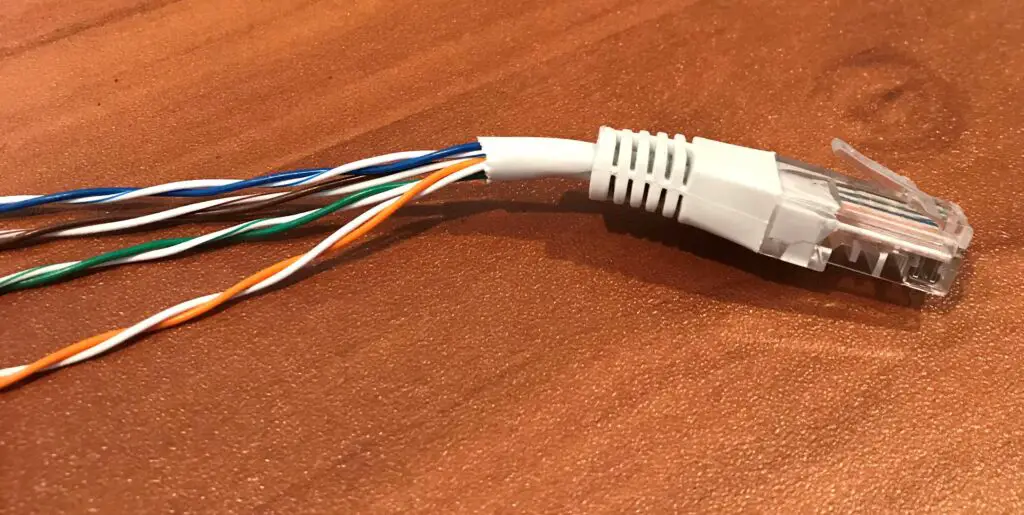
As you may have guessed, the foil inside a shielded ethernet cable greatly reduces the impact of EMI on the cable. Any electromagnetic interference that a shielded cable experiences is reflected or absorbed by the shielding.
This is why shielded and unshielded ethernet cables are constructed differently. Shielded cables need a grounding wire and foil to protect against EMI, while unshielded cables do not.
Flexibility
Another difference you’ll find between shielded and unshielded cables has to do with their flexibility.
Although shielded cables protect against EMI better than unshielded cables, they’re less flexible. That’s because of the foil inside shielded cables. The foil doesn’t bend very well.
When you look at an unshielded cable, all they have is copper wires (and no foil shielding) inside them. Copper wires are extremely flexible.
Here’s a side-by-side comparison of the two types of cables. In the following pictures, the black cable is shielded and the yellow cable is unshielded:
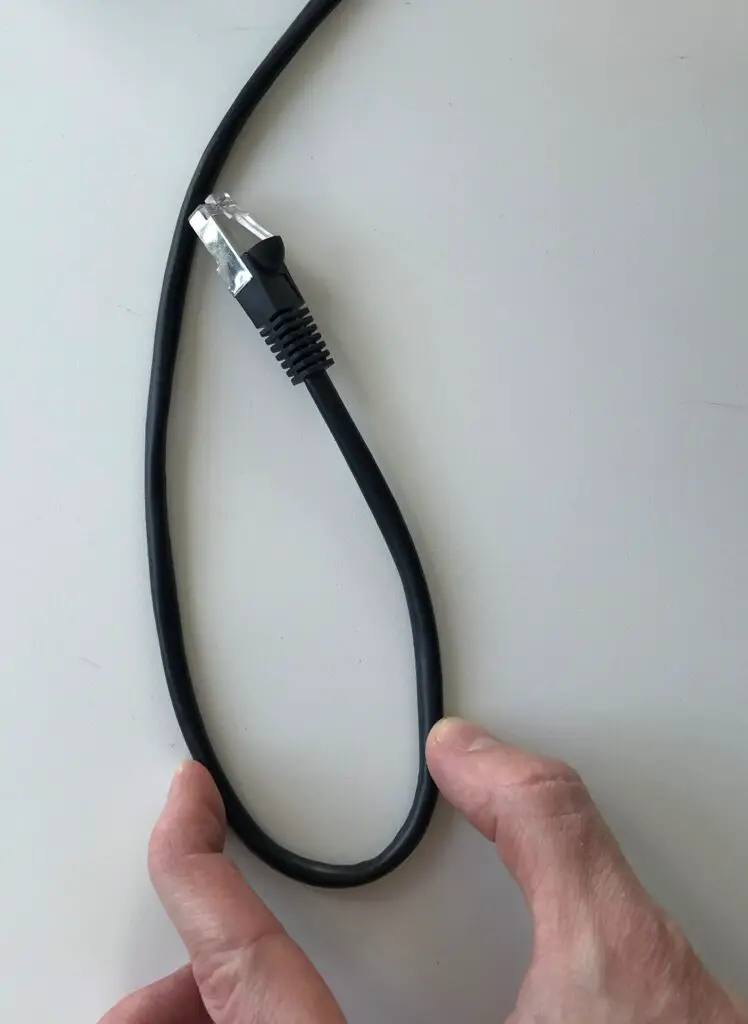
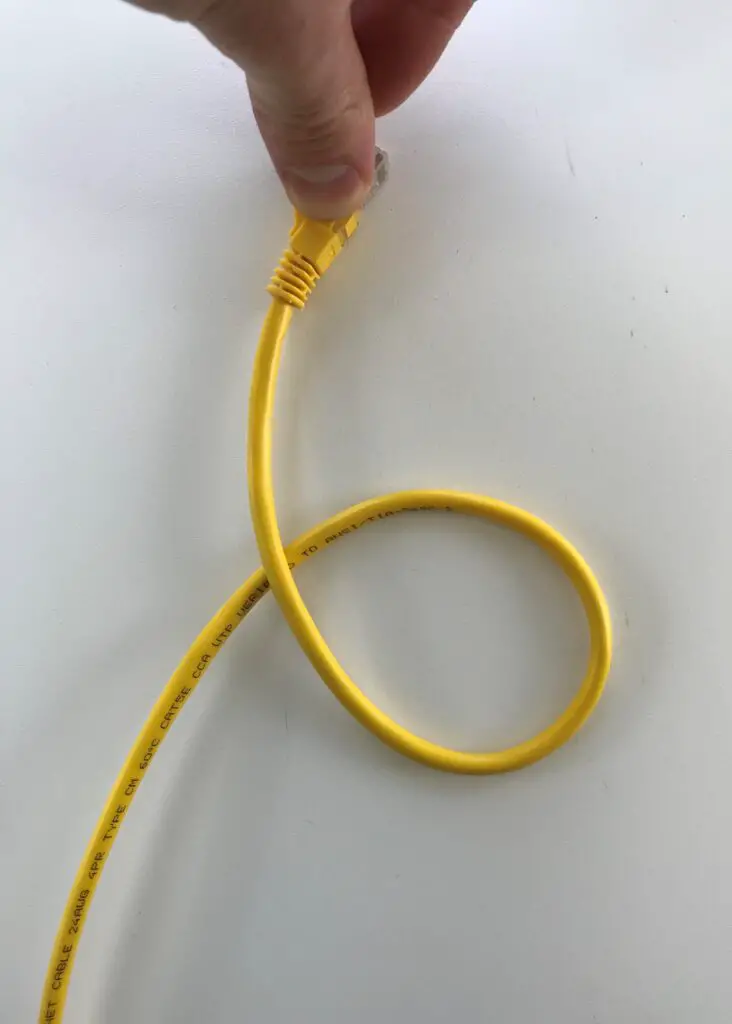
As you can see, the unshielded cable is much more flexible than the shielded one. The black cable may still look flexible, but I’m putting quite a bit of pressure on it with my fingers in this picture to hold it in place. I didn’t need to do that to bend the yellow unshielded cable.
So unshielded cables are more flexible. What’s the big deal?
This is an important difference because the more flexible a cable is, the less likely it is to get damaged.
If a cable is bent too much, it can damage the copper wires inside the cable. When this happens, your cable will stop working properly. This will greatly reduce your network performance, if not stop your connection entirely.
This is simply something to keep in mind when using shielded cables.
If you need to use shielded ethernet cable to protect against EMI, you’ll need to be careful when laying out your cable. You won’t be able to bend it like an unshielded cable. This limited flexibility of shielded cables can add a degree of difficulty in tight spaces where you don’t have a lot of room to maneuver.
Price
If you had to guess, which type of cable would be more expensive: shielded or unshielded cables?
It might not be surprising to hear that shielded ethernet cables are more expensive.
When you think about it, this makes a lot of sense. More materials (e.g. the metallic shielding) are used to make shielded cables when compared to unshielded cables. With more materials comes higher manufacturing costs, and therefore higher prices for the buyer.
Although shielded ethernet cables generally cost more than unshielded ones, they still aren’t very expensive.
For example, this 5 foot shielded ethernet cable is only a few dollars more expensive than this 5 foot unshielded ethernet cable. Both cables cost less than $10, so it’s not like you’re breaking the bank for you ethernet cables.
The bottom line here is that price shouldn’t be a factor when choosing which type of ethernet cable to use. If you have electromagnetic interference in the environment where your ethernet cables will be used, the slightly higher cost of shielded ethernet cables is worth it.
I’m sure you’ll agree that it’s not worth sacrificing your network performance for a few dollars.
When you should buy shielded ethernet cables
When deciding between shielded and unshielded ethernet cables, it all depends upon where the cables will be used.
This decision can be broken down pretty easily. If the environment will have high EMI, go with shielded ethernet cables. In other words, you’ll probably want to use shielded ethernet cables in manufacturing environments, datacenters, and in other areas where heavy-duty equipment will be running.
An important item to note is that shielded ethernet cables shouldn’t be used in areas without high EMI. Some people say “I’ll just buy shielded ethernet cables so I have an extra layer of protection in case there is EMI near the cable”, but this isn’t the best approach.
That’s because shielded ethernet cables will actually be slower than unshielded cables in environments where there is no EMI.
If you’re unsure if the environment has enough EMI to affect your ethernet cables, I suggest you run a test. Buy a shielded and an unshielded ethernet cable and try them both. If the unshielded ethernet cable works fine when you test it, you can probably get away with using unshielded cables.
It’s worth spending a few extra bucks for the test to make sure you get the right cables.
When you should buy unshielded ethernet cables
Now that we’ve identified that shielded ethernet cables should be used in high EMI environments, where should unshielded cables be used?
This is an easy one.
Unshielded cables should be used just about everywhere else.
In fact, you can get away with using unshielded cables in the vast majority of applications. You’ll find that unshielded cables are used in most homes, offices, and universities.
I think it’s safe to say that most of us are looking to get ethernet cables for our homes or offices, so unshielded cables are a safe bet.
The takeaway here is that the usage of shielded ethernet cables is an exception, and that unshielded cables will fit the bill most of the time.
Wrap up
Hopefully you now have a clear understanding of the differences between shielded and unshielded cables, and what you need to consider when deciding which type to buy.
If you still have questions about which type of cable you should get, or if you want to share your experiences with shielded vs unshielded cables, drop a comment below.
If you found this information helpful and you want to learn more, check out these related posts:
Is an Ethernet Cable Faster Than WiFi?
How to Tell if an Ethernet Cable is Bad
Does Ethernet Cable Length Affect Network Speed?
